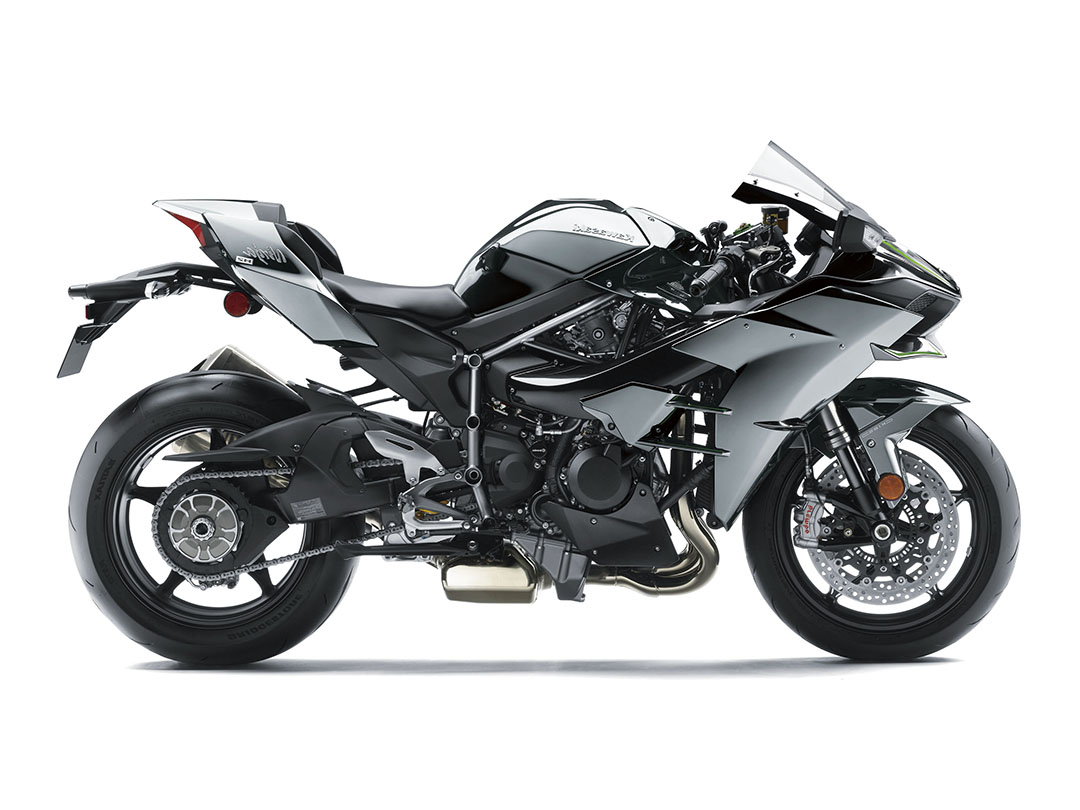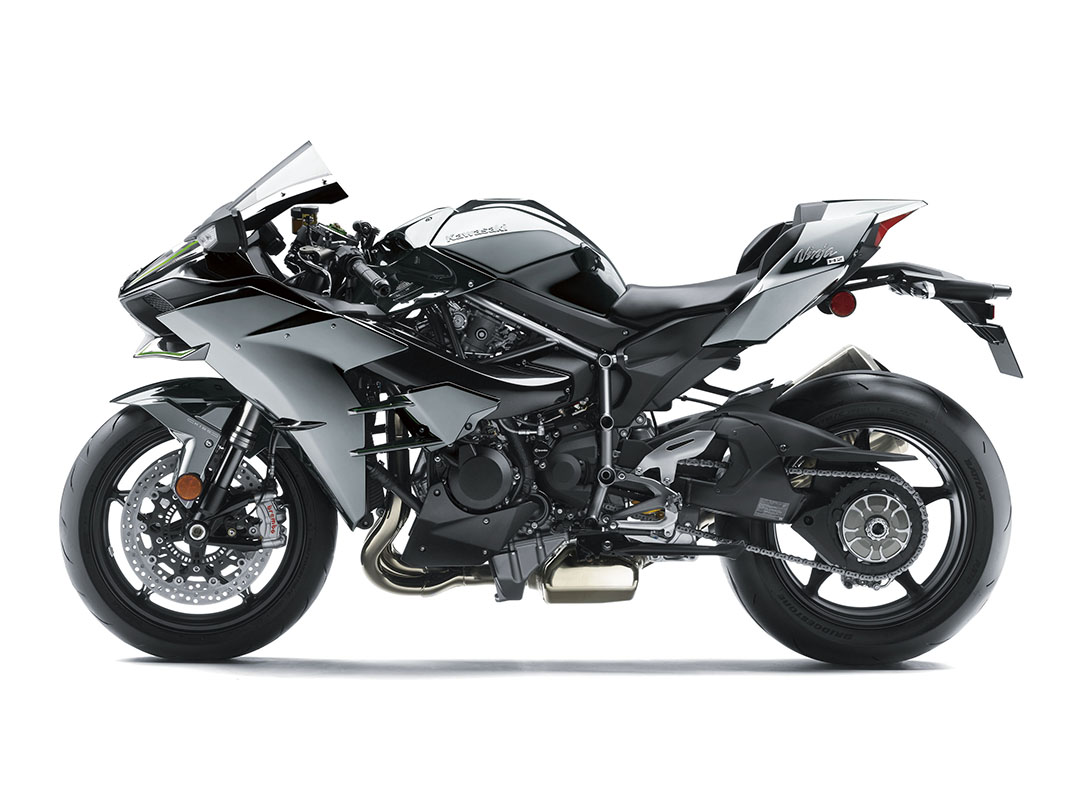Ninja H2 Carbon

Engine Type
4-Stroke, In-Line Four DOHC, Liquid Cooled
Displacement
998cc
Dimensions
2085 x 770 x 1125mm
Seat Height
825 mm
Max Power
231 HP / 11,500 RPM
Max Power (with RAM Air)
243 HP / 11,500 RPM
Max Torque
141.7 N.m / 11,000 RPM
Transmission
6-speed
Curb Mass
238 kgs
Fuel Tank Capacity
17 L
MSRP*
PHP 1,855,000
Designed to be the ultimate motorcycle, the Ninja H2 and H2 Carbon carries the legendary Ninja & H2 names and is crowned with the Kawasaki River Mark. For 2017, the Ninja H2 is joined by a high-grade model for discerning customers looking for something extra special. Called the Ninja H2 CARBON, it will be a limited edition model featuring a carbon-fibre upper cowl similar to that of the Ninja H2R, special paint and a serial number plate.
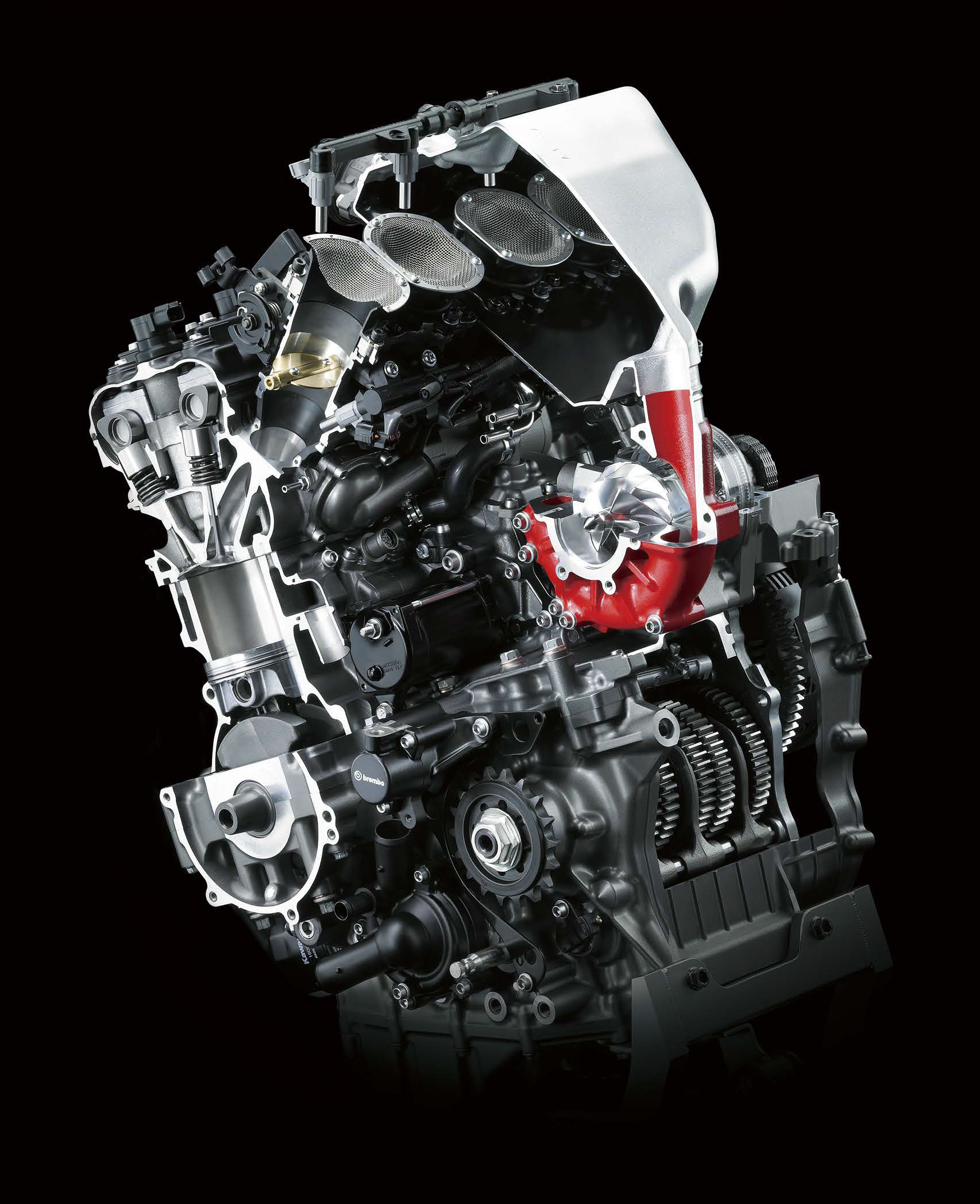
Supercharged Engine
The supercharger used in the Ninja H2 was designed by Kawasaki motorcycle engine designers with assistance from other companies within the KHI Group, namely the Gas Turbine & Machinery Company, Aerospace Company, and Corporate Technology Division. Designing the supercharger in-house allowed it to be developed to perfectly match the engine characteristics of the Ninja H2. The highly efficient, motorcycle-specific supercharger was the key to achieving the maximum power and the intense acceleration that engineers wanted.
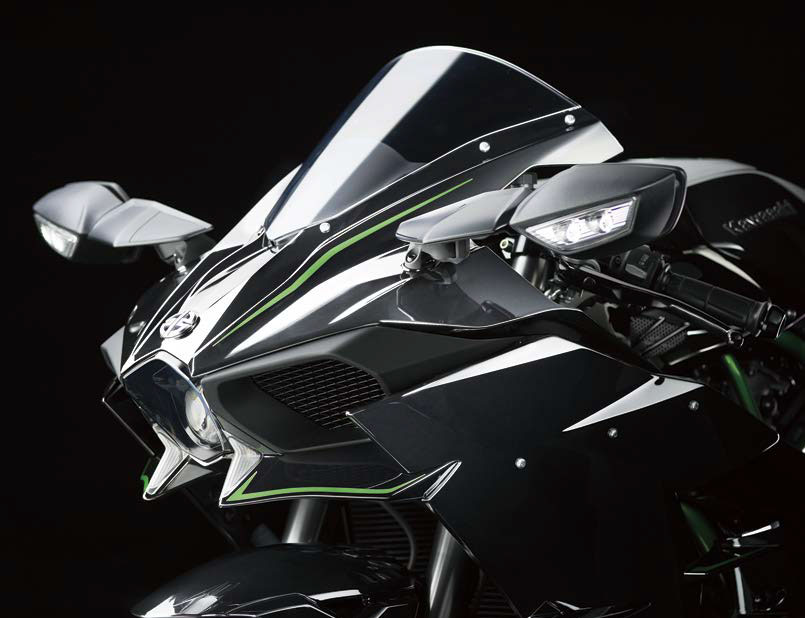
Aerodynamic Body
It is no accident that when viewed from the side, the Ninja H2 does not seem to have the aggressive forward-canted stance of most modern supersport models. While supersport bikes use their front-leaning attitude to aid in quick steering, at the speeds for which the closed-course Ninja H2R was designed, such a posture would create drag that would hinder top speed aspirations. Instead, the stance is very neutral, almost flat—think Formula 1 car—to make the body as aerodynamically sleek as possible.
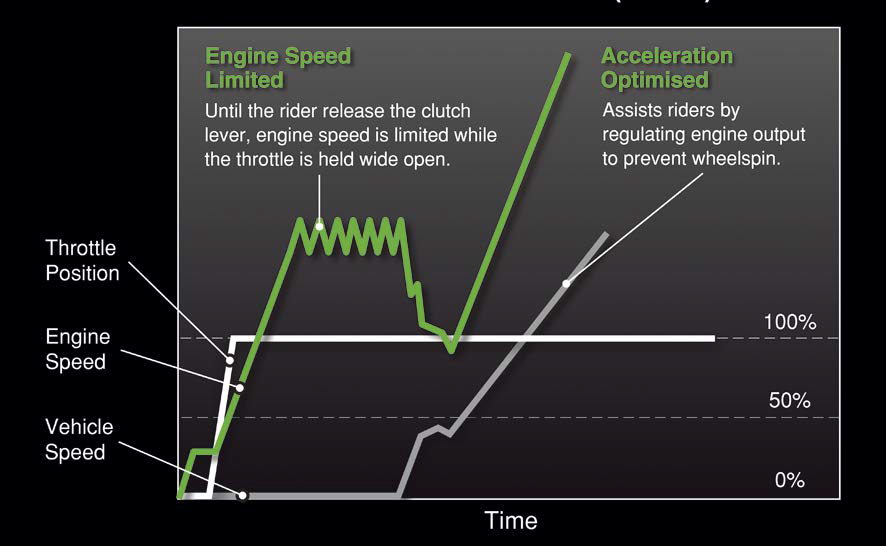
Kawasaki Traction Control
The new KTRC system used on the Ninja H2 combines the best elements of Kawasaki’s earlier traction control systems. Multi-level modes offer riders a greater number of settings to choose from, with each mode providing a different level of intrusion to suit riding conditions and rider preference, and all modes designed to manage output when a sudden slip occurs. The new system offers both enhanced sport riding performance and the peace of mind to negotiate slippery surfaces with confidence.

Kawasaki Launch Control Mode
Designed to assist the rider by optimizing acceleration from a stop, KLCM electronically controls engine output to prevent wheel spin and minimize wheelies when launching. Riders can choose from three modes, each offering a progressively greater level of intrusion. Each mode allows the rider to launch from a stop with the throttle held wide open.


